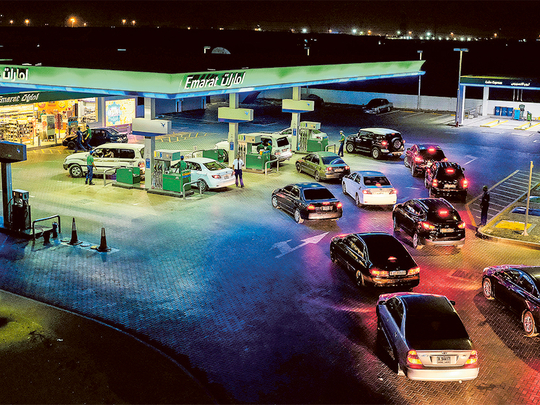
Dubai: The recent fuel and power subsidy reforms in the UAE will have a sustainable impact on the government’s finances and could be visible in fiscal balances, according to economists.
“We revise higher our 2016 fiscal surplus forecast to 2.5 per cent of gross domestic product (GDP), from 2.2 per cent previously, to capture the savings on current expenditure next year,” said Carla Slim, a Mena economist at Standard Chartered Bank.
Energy subsidies have been a drag on financial resources that could be used more productively elsewhere such as education and infrastructure. In addition they distort consumer incentives and they are not environmentally sustainable. Fuel prices in the UAE have been kept low thanks to fuel-price controls on gasoline and diesel. The resultant losses to the government fuel distribution companies were estimated at Dh12 billion ($3.2billion) in 2012.
“Subsidies in general are aimed at protecting the poorest in society, but energy subsidies tend to be much more beneficial to the upper middle classes, who have no need of subsidies,” Slim said.
Total subsidies and transfers cost the UAE government $17 billion in 2014, accounting for 12 per cent of total government spending. Of this, about $7 billion was spent on petroleum subsidies. It is estimated that the new pricing policy linked to global prices could save up to $7 billion in 2016, depending on how quickly prices are allowed to rise.
The reforms are clearly seen as a progressive step in fiscal reforms in the context of falling oil prices and a decline in government revenues by 22.5 per cent this year, as estimated by the UAE Central Bank.
Analysts said elimination of subsidies clearly boosts the sustainability factor in public finance.
“The linking of domestic fuel prices to international benchmarks would also set the way for near-automatic price increases in the future, eliminating the subsidy costs that would have been incurred if international oil prices increase going forward,” said Jean-Michel Saliba, Mena economist at Bank of America Merrill Lynch.
Energy subsidies in the Middle East and North Africa (Mena) region are high. The IMF estimates that energy subsidies cost at about $237 billion in 2011, that is 8.6 per cent of regional GDP and 22 per cent of government revenue — and accounted for 48 per cent of global energy subsidies. These are much higher than food subsidies, estimated at 0.7 per cent of regional GDP.
A number of countries in the region are moving towards rationalising subsidies to strengthen public coffers in the context of low oil revenues and more effective utilisation of resources. Oman has ended subsidies on industrial gas use while Egypt has undertaken subsidy reform on advice from the IMF, to rein in spending. Both governments have used the drop in oil prices as an opportunity to move ahead with subsidy reform.
Recently, Abu Dhabi took steps towards reducing domestic power subsidies. Electricity subsidies for residential buildings range from 55-90 per cent and water subsidies from 79-100 per cent. A new tariff system, effective January 1, 2015, is based on usage. Water tariffs will be increased by up to 170 per cent and electricity tariffs by up to 40 per cent for expatriates.
UAE nationals will also have to start paying for water and pay higher electricity tariffs, depending on consumption.
Energy subsidies in the UAE are equivalent to 5.6 per cent of GDP, according to the International Energy Agency. In the GCC, they range from a low of 5.5 per cent of GDP in Qatar to almost 11.5 per cent of GDP in Saudi Arabia. This is significant and, more importantly, places a burden on government finances. Even though governments can afford the subsidies, there is an opportunity cost attached to using financial resources to keep fuel prices capped.












